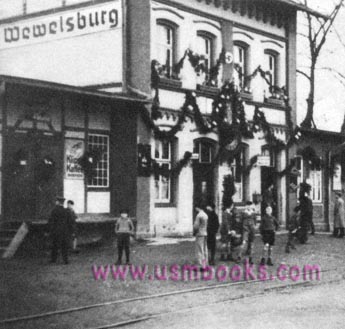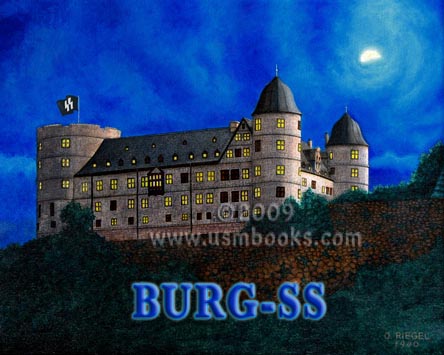Copyright © 1990, 1997, 2006, 2009, 2012
Used with permission
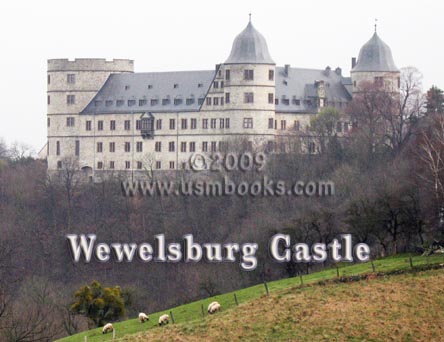
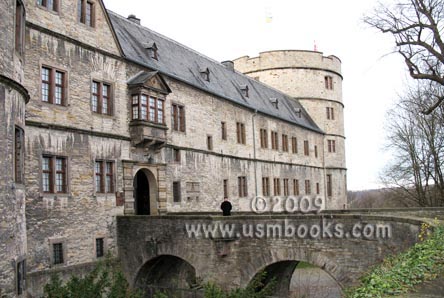
Wewelsburg, a small village of the town of Büren in Paderbornland, Westfalia (Nord), Germany has for hundreds of years been the site of a beautiful stone castle set atop a natural rock outcropping overlooking a wide valley. Built between 1604 and 1607 on the ruins of a much older fortress, Wewelsburg castle was the seat of Fürstbischof Theodor von Fürstenberg. For many years it was host to history, accommodating Napoleon, the Prussians and countless religious leaders. In 1815 lightning struck and destroyed a part of one of the three towers and the building fell into disrepair with only sections of it being put to use. Destruction by time and nature seemed all but certain.
Fate and the Third Reich intervened, however. Reichsführer-SS Heinrich Himmler was searching Germany in 1933 for an acceptable site for an Ordensburg (or Order Castle) and Reichsführerschule (or National Leader School) for the high leadership within the SS. Subsequent to a comprehensive investigation, Himmler determined that Wewelsburg possessed the proper Germanic history and site potential to become the home of his “Order of Nordic Men”.
Fate and the Third Reich intervened, however. Reichsführer-SS Heinrich Himmler was searching Germany in 1933 for an acceptable site for an Ordensburg (or Order Castle) and Reichsführerschule (or National Leader School) for the high leadership within the SS. Subsequent to a comprehensive investigation, Himmler determined that Wewelsburg possessed the proper Germanic history and site potential to become the home of his “Order of Nordic Men”.

On 27 July 1934 the Nazi Party signed a lease at 1 Reichsmark per year acquiring the rights to Wewelsburg Castle through the year 2033. Wewelsburg became Burg-SS (Fortress SS) and was visited often and continually by the cream of the SS.
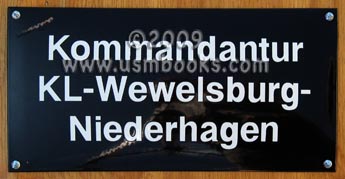
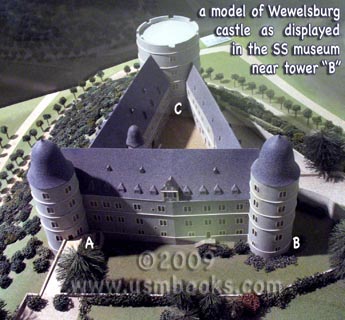
It was the intention of Himmler to vastly expand both the scope and the construction of Wewelsburg to encompass the entire village, and in anticipation of the labor requirements a new concentration camp was established nearby and called KL Wewelsburg - Niederhagen. An airport was built south of the town and the SS library containing 12,000 volumes was installed in the castle under the direction of SS Bibliotheksleiter Dr. Peter des Coudres. The SS Schule Haus housed a fine collection of art and the personal weapons collection of Himmler.
Himmler was obviously charmed by the history his SS archeologists unearthed at Wewelsburg when he said of the place in 1935, “In this castle the spirits of the original residents will inspire the spirits of the future”. Work on the restoration and adaptation proceeded rapidly once a budget of 250 million Reichsmarks was approved for Projekt Wewelsburg. Prisoners from Konzentrationslager (KL or Concentration Camp) Sachsenhausen joined members of the Freiwillige Arbeitsdienst (FAD or Voluntary Labor Service), Reichsarbeitsdienst (RAD or State Labor Service) and the SS in the construction and by May 1939 the SS Schule Haus Wewelsburg was occupied under the command of SS General Siegfried Taubert.
A ceremonial room in the old crypt under the north tower was beautifully finished and Himmler instructed that he was to be buried there when he died. All sorts of unique, superbly handcrafted furnishings from chairs to china to stair railings decorated many of the SS rooms in the castle. The work was interrupted in 1941 due to the war and was never completed as Himmler and his staff had envisaged it.
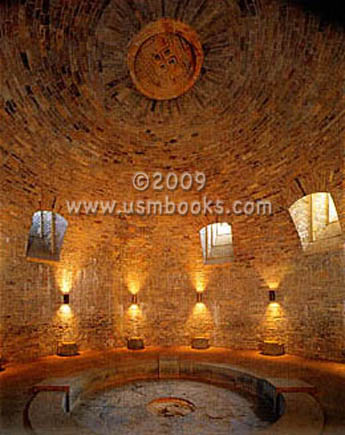
Fate caught up with Wewelsburg castle again in Spring 1945. The elite of the elite had passed through Wewelsburg for a few years, but on 31 March 1945 a single man was left with orders to blow-up the SS Schule Haus in the face of the advancing US 3rd Armored Division (most German and English online and printed histories say that it was the American Third Infantry Division that captured the castle, but it wasn’t. It was the US 3rd Armored Division).
The man in charge of destroying the castle was SS Hauptsturmführer and Knights Cross holder Heinz Macher, and fortunately most of the damage he and his demolition crew caused to the building was the result of fire rather than explosives. SS personnel and local civilian residents looted all sections of the castle prior to the arrival of American Forces.
Wewelsburg castle is open to visitors with most of Himmler’s alterations still in place. A SS museum adjacent to the castle displays a very wide variety of SS memorabilia including the Wewelsburg SS Totenkopfring, a Wewelsburg chair, SS china and silverware, SS office equipment, etc.
Wewelsburg castle is open to visitors with most of Himmler’s alterations still in place. A SS museum adjacent to the castle displays a very wide variety of SS memorabilia including the Wewelsburg SS Totenkopfring, a Wewelsburg chair, SS china and silverware, SS office equipment, etc.
For a more complete examination of the SS work carried out at Wewelsburg, the books Endzeitkämpfer Ideologie und Terror der SS and Heinrich Himmlers Burg - das Weltanschauliche Zentrum der SS and Wewelsburg 1933 bis 1945 Kult- und Terrorstätte der SS are recommended.
(end of copyrighted history)
(end of copyrighted history)
A BRIEF HISTORY OF WEWELSBURG CASTLE

